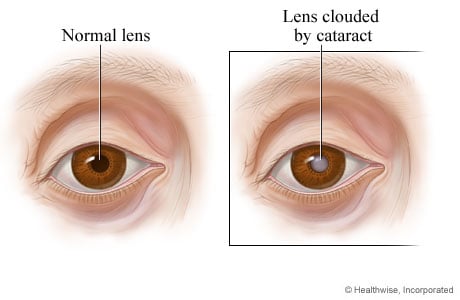The answers to your questions about the cataracts and it’s symptoms.
In an effort to promote awareness about the world’s leading cause of blindness, Prevent Blindness America (PBA) recently announced that they have officially declared June as Cataract Awareness Month.
 This eye disease currently affects more than 22 million Americans over the age of 40, and it is projected that by the year 2020, more than 30.1 million Americans will have cataracts.
This eye disease currently affects more than 22 million Americans over the age of 40, and it is projected that by the year 2020, more than 30.1 million Americans will have cataracts.
PBA also reported that there are more global cases of cataracts than there are glaucoma, age-related macular degeneration, and diabetic retinopathy combined. In order to further educate people about this serious eye disease, throughout the entire month of June, PBA is encouraging people everywhere to learn about the serious risk factors, symptoms and treatment options of cataracts.
In light of Cataract Awareness Month, we have gathered the most frequently asked questions about cataracts and are answering them in a weeklong two-part blog series. Today we have the answers to your most pressing questions about cataract eye disease and it’s causes:
What are cataracts?
A cataract forms when the lens of the eye becomes clouded, blocking or changing the passage of light in the eye. This can cause blurry sight and distort the eye’s vision, especially on bright, sunny days or while driving at night.
The lens is held inside a capsule located just behind the pupil and the colored iris. It is made up of protein fibers and water molecules that are arranged exactly to allow light to pass through without interference. Cataracts occur when these fibers begin to split over time, clustering together and clouding the lens. As fibers continue to break down, the clouding becomes more and more dense and covers a larger part of the lens.
How common are cataracts?
Cataracts are the leading cause of blindness among older adults in the United States. By age 65, about half of the population has cataracts, with nearly everyone over the age of 75 having at least one. They begin to form between the ages of 40 and 60, but they usually don’t have an impact on vision when they first form.
In rare cases, infants can also suffer from congenital cataracts. This can occur with the mother has German measles, chickenpox, or another infectious disease during pregnancy, however it’s rare.

What causes cataracts?
This is the most frustrating part about cataracts―there’s no real definite cause. In most cases, cataracts are simply a part of the aging process. As you get older, your chances of developing cataracts increases.
However, while there are no exact cause of cataracts, there are several risk factors:
- A family history of cataracts
- Certain diseases, such as diabetes
- Long-term steroid use
- Long-term exposure to UV rays and excessive sunlight
- Smoking
- Unhealthy eating habits
- Eye injuries or diseases
What can I do to prevent cataracts from forming?
Because there is no definite cause, there is currently no way to prevent age-related cataracts. The best chance a person has for preventing cataracts is to avoid the risk factors mentioned above.
Women should check with their doctors and obstetricians regularly about how they can prevent infection-related congenital cataracts. People with a family history of diabetes, or people who have been diagnosed themselves, can help to decrease their risk of developing cataracts by keeping a strict eye on their blood sugar levels and controlling what they eat.
Now that you know more about cataracts and the risk factors associated with them, tune in later this week for information about common symptoms, different treatment options and everything you need to know about cataract surgery.
Image source: National Eye Institute, Health.com